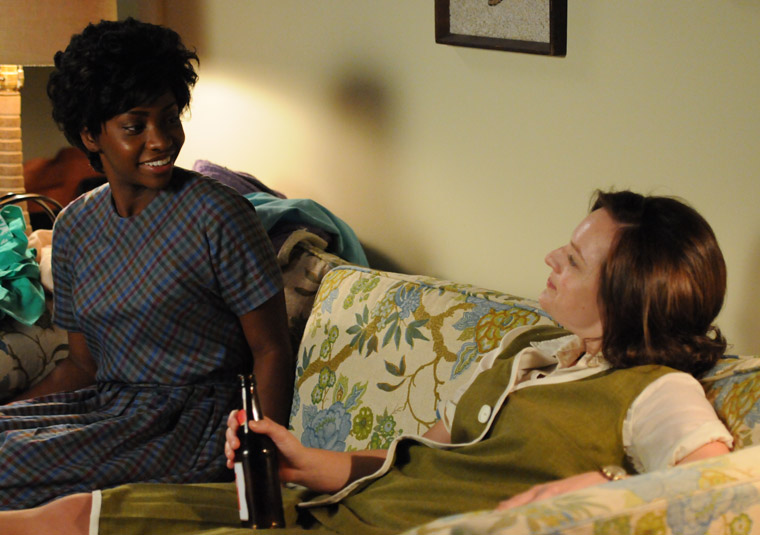Samantha Irby wonders why ‘Mad Men’ bothers with black characters at all
By Kate Dries

Samantha Irby wonders why ‘Mad Men’ bothers with black characters at all
By Kate Dries
AMC’s Mad Men has been lauded for its nuanced depiction of life 1960s America, particularly the voice it gives to women. However, it’s been picked upon for how little black Americans have been represented on the show. Others feel this is an unfair claim, given that in the world of advertising at this time, there were few black people around.
But in the fifth season, which takes place in 1968, Mad Men has to confront race, if it’s going to go by history. It’s done so thus far with by introducing a new black secretary, and by pulling a story about a civil rights demonstration straight from the headlines.
But writer Samantha Irby isn’t sure any of this makes much of a different in a show where all the main characters are white. To Irby, Mad Men “represents the loophole white men have created to dodge the political correctness of current racial and gender equality, and also happens to be a total turnoff to me as woman of color: the Period peace.” She asks: why introduce any black characters in the first place, if the show isn’t going to engage with them in any real way? Read an excerpt or listen:
“The year is 1967, and black people FINALLY exist. At least, we finally exist within the drab, colorless context of Mad Men’s fictional Sterling Draper Cooper Price. After a much ballyhooed delay, your ex-wife’s favorite television program is back on the air for a fifth season.
I never much understood the obsession with this show past its visual appeal: the writing is kind of weak, the characters are mostly shallow, the actors playing those characters are totally boring, and the acting isn’t really impressive, but I do appreciate the painstaking care with which every single Art Deco end table and antique lamp has been researched and chosen by the set decorator.
Seriously, I buy the kind of furniture that snaps together like Legos, and all of those beautiful sunken living rooms almost make me care about interior design. Also, Jon Hamm and his big chin has the kind of face you want to sit on for, like, nine hours. Like I said, it’s the visuals that really carry the show.”
The Paper Machete is a weekly live magazine at the Horseshoe in North Center. It’s always at 3 p.m., it’s always on Saturday, and it’s always free. Get all your The Paper Machete Radio Magazine needs filled here, or download the podcast from iTunes here.
